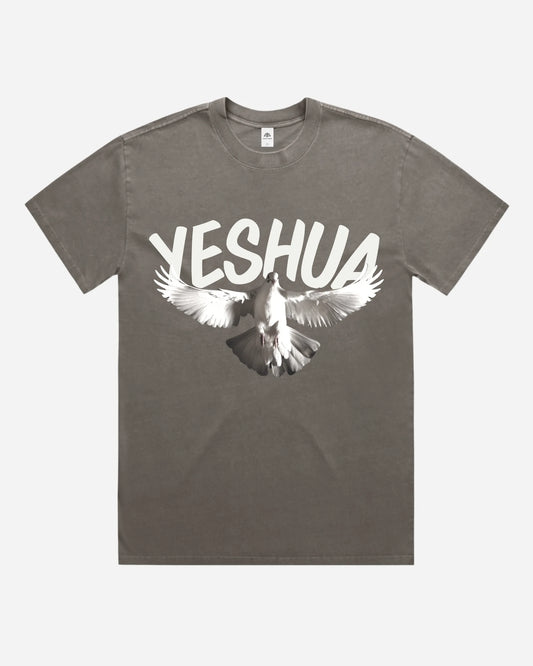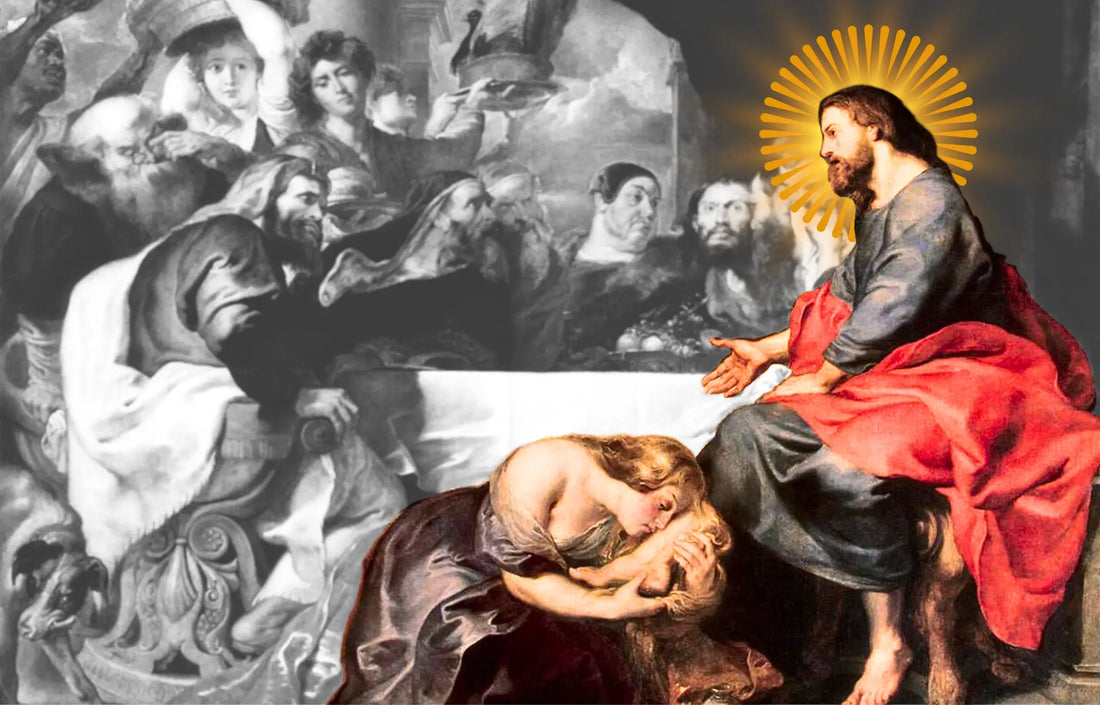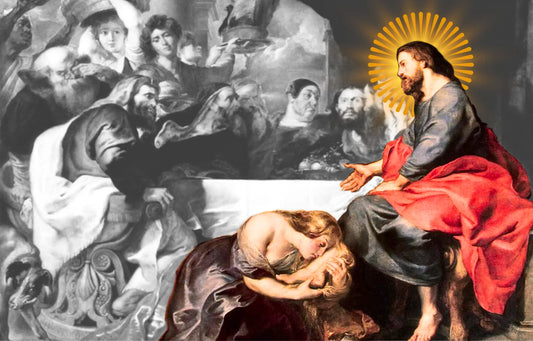Spikenard, also known as nard, muskroot, and nardin, is one of the most compelling aromatic substances in the Bible. In John 12:3, Mary anoints Jesus’ feet with pure nard, worth nearly a year’s wages 300 denarii—nearly a year’s wages (Pliny the Elder, Natural History 12.26). Derived from Nardostachys jatamansi, a flowering spikenard plant of the valerian family, it was imported from the Himalayan regions of Nepal and northern India.
What Is Nard (Spikenard Oil)?
Botanical and Geographical Origins
Spikenard is extracted from the roots and rhizomes of Nardostachys jatamansi, found at elevations between 10,000 and 16,000 feet in the Himalayas. Its remote and mountainous habitat made harvesting difficult. The roots were steam-distilled to produce a thick, earthy-scented oil that was dark amber in color.
Because of its scarcity and difficulty of transport, spikenard had to be carried through long trade routes—often by Nabatean merchants—crossing from India through Arabia before reaching Mediterranean markets (Sidebotham, Berenike and the Ancient Maritime Spice Route, 2011).
What Does Nard Smell Like?
Spikenard has a distinctive, musky aroma that blends woody, earthy, and slightly sweet tones. It’s often described as pungent but grounding, with a warm, balsamic base. Unlike modern floral perfumes, its scent evokes ancient temples and mountain soil. Historical accounts and modern distillations both confirm that spikenard’s smell was strong enough to fill entire rooms—an aromatic signature of deep spiritual presence (John 12:3).
Nard Oil Benefits
Ancient texts and modern studies agree: spikenard oil carries therapeutic properties. Dioscorides’ De Materia Medica (1st century CE) lists it as helpful for calming the nerves and aiding sleep. The Sushruta Samhita—an ancient Indian medical text—mentions its use in treating heart conditions and mental distress. Modern research confirms these benefits: spikenard has sedative, anti-inflammatory, and antidepressant effects (Raut et al., Phytochemistry and Pharmacology, 2012). It’s used in aromatherapy for stress relief, insomnia, and emotional grounding.
Clarifying Modern Confusions
Many commercial products labeled “nard” today are adulterated or substituted with oils like lavender, valerian, or patchouli. True biblical spikenard is chemically and botanically distinct, and should not be confused with frankincense, myrrh, or cinnamon.
Spikenard in the Ancient World
In Egyptian and Mesopotamian Culture
Ancient Egyptian texts, including the Ebers Papyrus (c. 1550 BCE), mention aromatic resins used for embalming and healing. Though not native to Egypt, spikenard was imported and likely used in the embalming of elites. Similarly, in Mesopotamia, it played a role in ritual purification and royal anointing oils (Manniche, Sacred Luxuries, 1999).
In Greek and Roman Use
The Romans considered spikenard a luxury. Pliny the Elder listed it among the most expensive imports. The emperor Nero reportedly burned a year's supply of it at his wife Poppaea’s funeral (AD 65)—a staggering show of wealth (Pliny, Natural History 12.41). Galen (2nd century CE), the physician, described it as effective against nervous disorders and insomnia.
Spikenard in the Bible: Key Passages
John 12:3 – Mary Anoints Jesus’ Feet
Then Mary took about a pint of pure nard, an expensive perfume; she poured it on Jesus’ feet and wiped his feet with her hair. And the house was filled with the fragrance of the perfume.
This act stunned witnesses. Mary’s use of such a precious oil—worth 300 denarii—was more than generosity; it was a prophetic act of anointing for burial (Evans, Mark 8:27–16:20, 2001). Judas, appalled by the expense, revealed his heart. Jesus, however, praised the act as spiritually insightful.
Mark 14:3 – The Alabaster Jar
A woman came with an alabaster jar of very expensive perfume, made of pure nard. She broke the jar and poured the perfume on his head.
Breaking the jar was not symbolic—it was practical. Once broken, alabaster containers couldn’t be resealed. The totality of her offering represented unreserved devotion (Malina & Rohrbaugh, Social-Science Commentary, 1998).
Song of Solomon 1:12; 4:13–14
Spikenard appears as a fragrance of love:
While the king was at his table, my perfume spread its fragrance." "Your plants are an orchard... with every kind of incense tree... including nard.
These passages link nard to bridal intimacy and sacred union (Pope, Song of Songs, 1977).
Symbolism of Spikenard
Devotion and Sacrifice
Spikenard’s costliness made it a symbol of total surrender. In both Gospel scenes, the women’s acts shocked those present. Yet Jesus calls them beautiful. Their worship wasn’t cautious—it was costly.
Burial and Prophecy
Jesus explicitly connects the act to His impending death (John 12:7). In Jewish burial customs, spices and oils were essential (cf. John 19:40). Spikenard carried prophetic meaning—it foreshadowed His burial and messianic role.
Royalty and Priesthood
While Exodus 30’s holy anointing oil does not include nard, it was used in royal settings throughout the ancient world. Anointing Jesus with nard highlighted His identity as King and Priest—a convergence of political, spiritual, and sacrificial authority.
Economic and Social Cost of Spikenard
A Year’s Wages
In 1st-century Judea, 300 denarii was the standard annual wage for a laborer (Matthew 20:2). The value of the perfume was enough to provoke outrage. But in God’s economy, love has no ceiling.
Trade Routes and Rarity
Spikenard moved along the Incense Route, controlled by the Nabateans, and was often sealed in alabaster jars to retain its scent (Dalby, Dangerous Tastes, 2000). These jars were symbolic of preservation and extravagance.
Theological Depth: Anointing the Messiah
Women as Prophetic Agents
In a deeply patriarchal context, women anointing Jesus was radical. Their actions anticipated what male disciples missed. Mary’s anointing stood in stark contrast to Judas’ betrayal—she poured out; he plotted. Scholars such as Kenneth Bailey note how Mary’s act broke cultural norms, including letting down her hair (Bailey, Jesus Through Middle Eastern Eyes, 2008).
Nard Perfumes as Witness
The room filled with nard scent was more than poetic detail. In the ancient world, smell was linked with memory and presence. Paul later applies this to the Church: “We are the aroma of Christ” (2 Corinthians 2:15). Worship, like fragrance, should linger and testify.
Spikenard as Symbol of Hidden Holiness
Root-Based Symbolism
Spikenard comes from buried roots—a fitting metaphor for the hidden nature of the Kingdom of God (Luke 17:20–21). Unlike blossoms that dazzle in sunlight, spikenard matures in darkness. It draws nourishment from unseen places, much like the spiritual life that grows in secret prayer, humility, and suffering. Early Christian thinkers like Gregory of Nyssa wrote of virtues taking root in the soul, hidden from human praise but pleasing to God.
Faith That Costs
Mary gave what she could not recover. Judas calculated profit. Spikenard confronts every soul that seeks to worship without risk. Her act wasn’t efficient, nor was it logical by market standards. It was an offering of pure love, poured out in trust.
This echoes the theology of costly grace, as described by Dietrich Bonhoeffer: grace that “is costly because it calls us to follow, and it is grace because it calls us to follow Jesus Christ.”
Misconceptions About Spikenard
- Not Myrrh: Though both were used in burial, spikenard is a root oil, not a resin.
- Not in Exodus 30: The holy anointing oil includes myrrh and cinnamon, but not nard.
- Not Always Authentic Today: Many "nard" oils on the market are synthetic or mixed with unrelated plants.
Use of Spikenard Today
Eastern Christian Traditions
Spikenard continues to appear in Eastern Orthodox rites, especially during Holy Week. The Byzantine Church used it in chrism oil to anoint priests and altars (Taft, The Great Entrance, 1975).
Modern Aromatherapy
Clinical studies confirm spikenard’s sedative effects. It reduces anxiety and supports sleep regulation (Raut et al., Phytochemistry and Pharmacology, 2012).
Cultural Symbolism
The alabaster jar has become emblematic of unreserved worship, especially in Christian art and liturgy. Some traditions associate this act with Mary Magdalene, although the identification remains debated (Haskins, Mary Magdalene: Myth and Metaphor, 1993).
Conclusion: A Fragrant Offering
Spikenard wasn’t just expensive—it was expressive. Its biblical use challenges transactional faith and elevates acts of devotion that look wasteful to the world but are treasured by God. Like spikenard, the gospel itself is poured out, precious, and misunderstood.
Jesus said her story would be remembered wherever the gospel is preached. And it is. Because real worship always leaves a trace.














